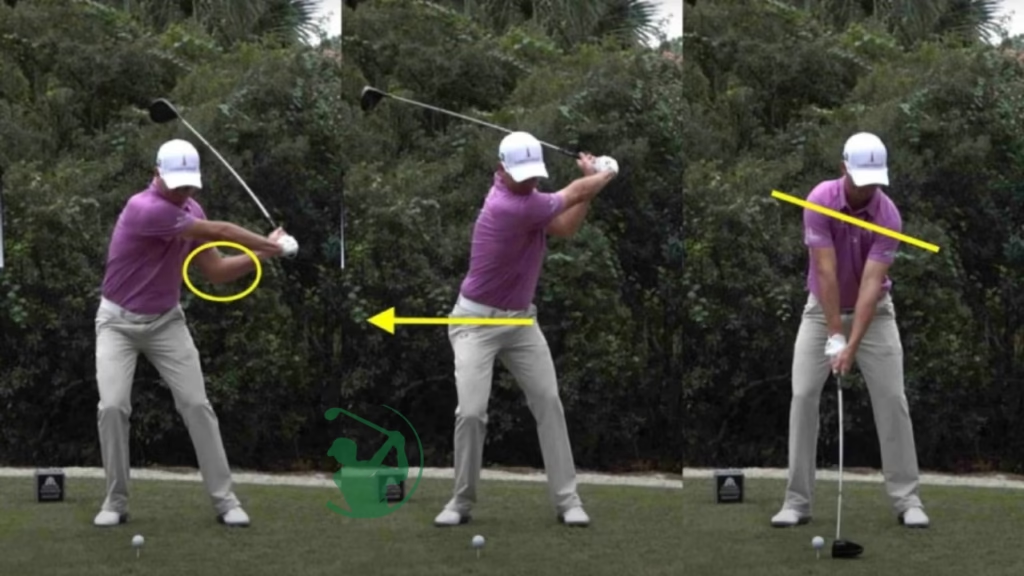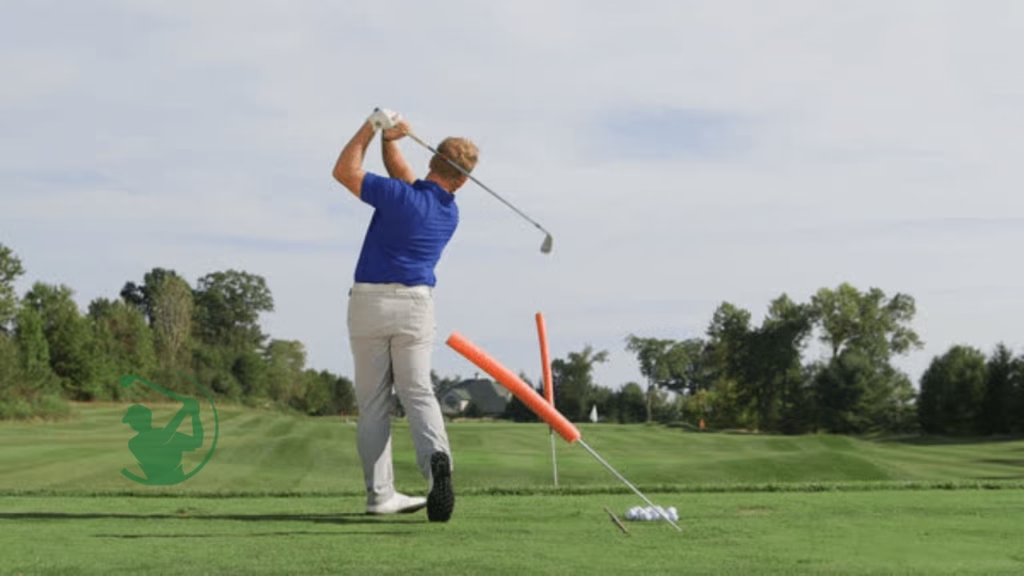How to Swing a Golf Club (2025 Guide)
Golf is viewed as an uncomplicated game, but the swing is ironically one of the most complicated parts of playing well. It took me years of practice, lessons, and trial and error, but I’ve discovered that mastering the golf swing involves breaking down its components and creating a fluid, repeatable motion for each. Today, I will guide you through learning how to swing a golf club, from the initial setup to the follow-through.
Whether you’re just starting as an absolute beginner or looking for ways to refine your technique as an intermediate player, in this guide, you will find all the mind-boggling techniques you need to accelerate your game. I’ll also add drills, expert tips, and mistakes to avoid. Whether or not the explanation will be sufficient for you to do it yourself, more importantly, I will present the overview in small, digestible, easy-to-implementation action steps you can implement at this minute.
Let’s dive in and discover how to swing a golf club like a pro!
Golf Swing Basics

Before we get into details about each phase of the swing, we need to understand the golf swing’s basic mechanics. A proper swing is all about consistency, timing, and balance. The fundamental goal is to strike the ball cleanly and send it down the fairway (or onto the green) with accuracy and power.
A good golf swing has three main stages:
- Setup — position before the swing.
- Backswing: The movement that takes the club behind you.
- Downswing: The dynamic movement that accelerates the club toward the ball.
- Follow-through: The motion that allows you to carry your momentum after hitting the shot.
If you master each of these phases, you will develop a repeatable golf swing. Phase Dynamics — The first stage is the knowledge of the flux of each respective phase and the dynamics that generate it
Proper Setup for a Consistent Swing
Proper setup is vital to a repeatable golf swing. Your posture, grip, and alignment all affect how well you’ll make the swing. Here’s how to set it up:
- Grip: Rest your hand in a neutral grip position. Grip the club with your fingers rather than your palms, and maintain relaxed but firm hands. For right-handed golfers, the “V” made by your thumb and index finger should point to your right shoulder.
- Posture: Stand with your feet shoulder-width apart and your hips hinged back a little, keeping your back straight. Your arms should drape from your shoulders.
- Alignment: The feet, hips, and shoulders should parallel the target line. This is critical for an accurate, straight shot. You can do this by putting an alignment stick on the ground parallel to the target line.
Setup is arguably the most essential part of mastering your aim and the best chance at generating power and accuracy with your golf swing.
Understanding the Backswing

- The backswing: This is where you start from. It’s where you begin to generate potential energy that will be unleashed on the downswing. Here’s how to do a proper backswing:
- Begin the Swing: Using a smooth and controlled motion, bring the club back by rotating your shoulders. Let your arms stay relaxed, and let the club follow your body’s rotation.
- Back Swing: When you take the club back, transfer your weight onto your back foot (right foot for right-handed players). This charges energy for the downswing.
- Club Position: At the top of your backswing, your club should be parallel to the ground, with the shaft pointing toward your target. Your lead arm (left for right-handers) must be straight but not rigid.
A smooth and controlled backswing is the key to success. Do not rush or jerk the club back — this can disrupt your timing.
Executing the Downswing

Next is the most powerful section of the swing, the downswing. This is where the stored energy of your backswing is unleashed, transferring into the golf ball. Here’s how to make a proper downswing:
- Start with the Hips: The hips begin the downswing by rotating toward the target, which continues to generate power and keep the motion fluid.
- Shift Weight: As your hips turn, move your weight onto your front foot. This makes for a solid and healthy basis for the club to follow through with.
- Swing Path: Ensure that the movement of your club is correct—inside, down, through the ball. Do not swing too steep or too shallow.
- Release in the Hands: When you reach the ball, the hands “release,” or rotate, so the clubface can square up as you hit that impact position. This will guarantee a clean strike.
And for the downswing, it all comes down to timing. Rush it or get out of sequence, though, and you’ll lose power and precision. Concentrate on fluid, deliberate motions.
Perfecting the Follow-Through
The follow-through is one element of the swing that is rarely discussed, yet it is just as critical as any other portion. Good follow-through finishes your swing with control and balance.
- Follow Through the Rotation: Once you contact the ball, rotate your entire body through the shot. Rotate your chest toward the target, so all your weight is on your front foot.
- Position: Your club should be high, with the shaft pointing towards the sky. This shows that you’ve fully committed to the shot and that your swing has flowed seamlessly throughout the process.
- Balance: Your follow-through should involve planting your head over your front foot and your body facing the target.
A smooth, balanced follow-through is a sign of a good swing. The practice also prevents injury because it allows your body to unwind naturally.
Common Golf Swing Mistakes to Avoid
Like any skill, there are a few potholes to avoid as you learn to swing a golf club. Here are a few to remember:
- Sway Instead of Rotate: Most beginners’ biggest mistake on the backswing is swaying their bodies. Prefer to rotate your shoulders and hips to balance and hand power.
- Common Golf Mistakes (Over-Gripping the Club): Holding on to the club very tightly can prevent your swing from being fluid because it causes tension in your hands and arms. Maintain a light but tight grip.
- Downswing too early: When you try to hit the ball too hard or too fast, it can hurt your overall performance. Focus on smooth motion and control for a more consistent stroke.
- Lift Head: One of the most common mishitting mistakes is lifting the head too early. This principle states that you should have your eyes on the ball the entire swing.
Staying clear of these mistakes will set you to score similar consistency and power soon.
Practical Golf Swing Drills

Practice is the key to mastering the golf swing. Here are some drills that can help:
- Slow-motion swing drill: This drill helps you focus on the key positions of the swing while using slow-motion to practice. Make slow, intentional swings and pay attention to each component: setup, backswing, downswing, and follow-through.
- One-handed Swing Drill: Make swings with only one hand at a time. You should do this drill for a more flowing swing movement and muscle memory.
You are essentially learning what you should and should not do with an impact bag by hitting an impact bag. This lets you concentrate on making clean contact on the ball with the correct impact.
Following this path, we now arrive at the drills defining your swing mechanics and mimicking perfection.
Conclusion: How to Make Your Golf Swing Better
Developing a proper golf swing is a process that requires time, practice, and patience. To emphasize just the core elements you would want to establish, set up, backswing, downswing, through impact, and follow through, work on your technique with proper swing mechanics to develop a more repeatable and playable swing. All while avoiding common mistakes, drilling effectively, and being patient with yourself as you progress. Remember that the secret to a good golf swing isn’t trying to pound the ball as hard as you can but emphasizing fluid, controlled motion and finding a rhythm that works for you. Stay with it, and in time, you will notice game improvements irons.






